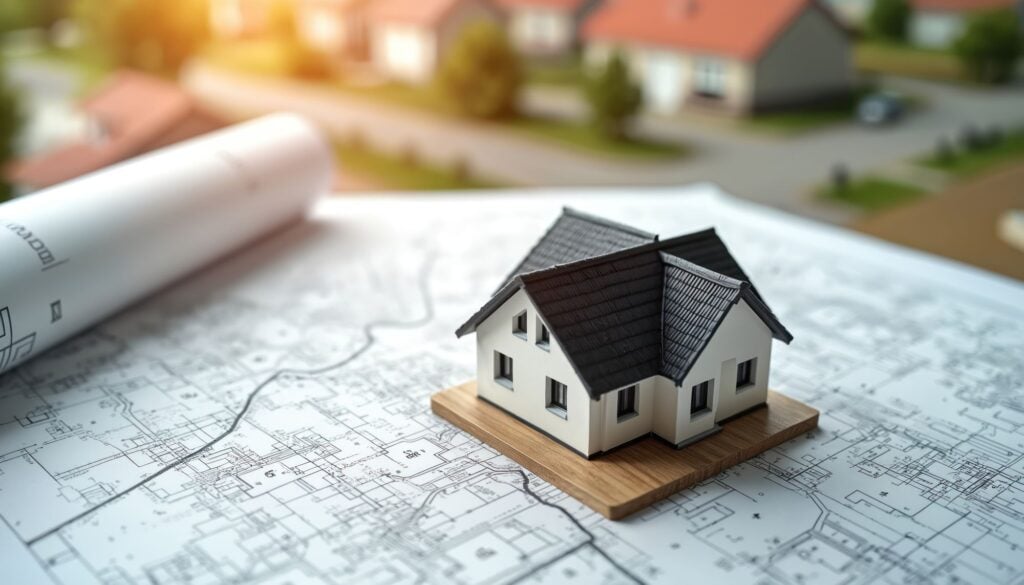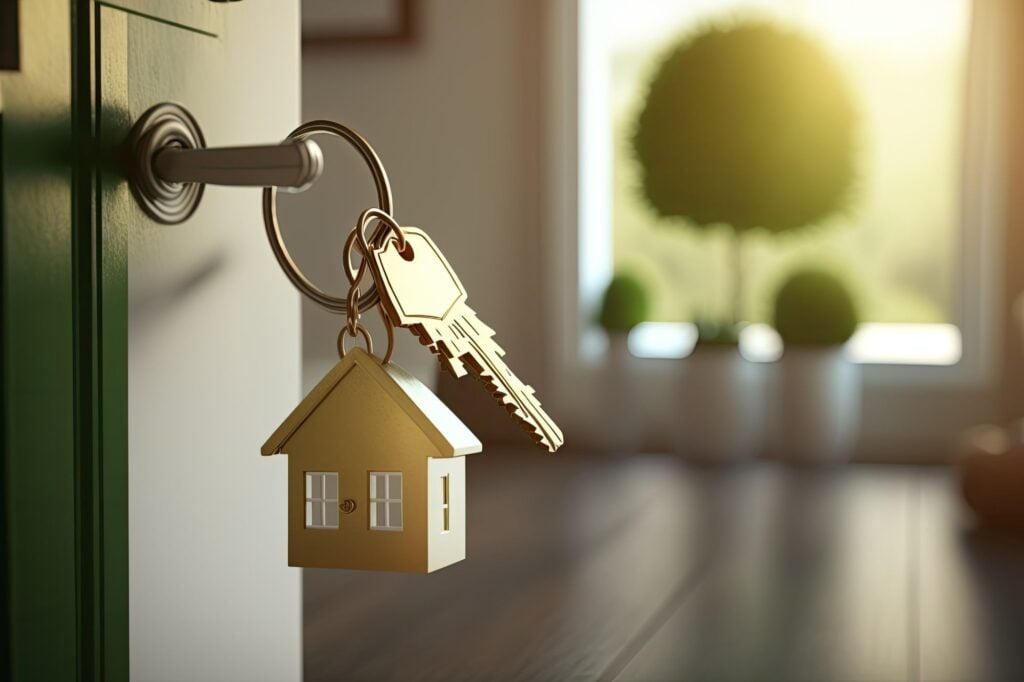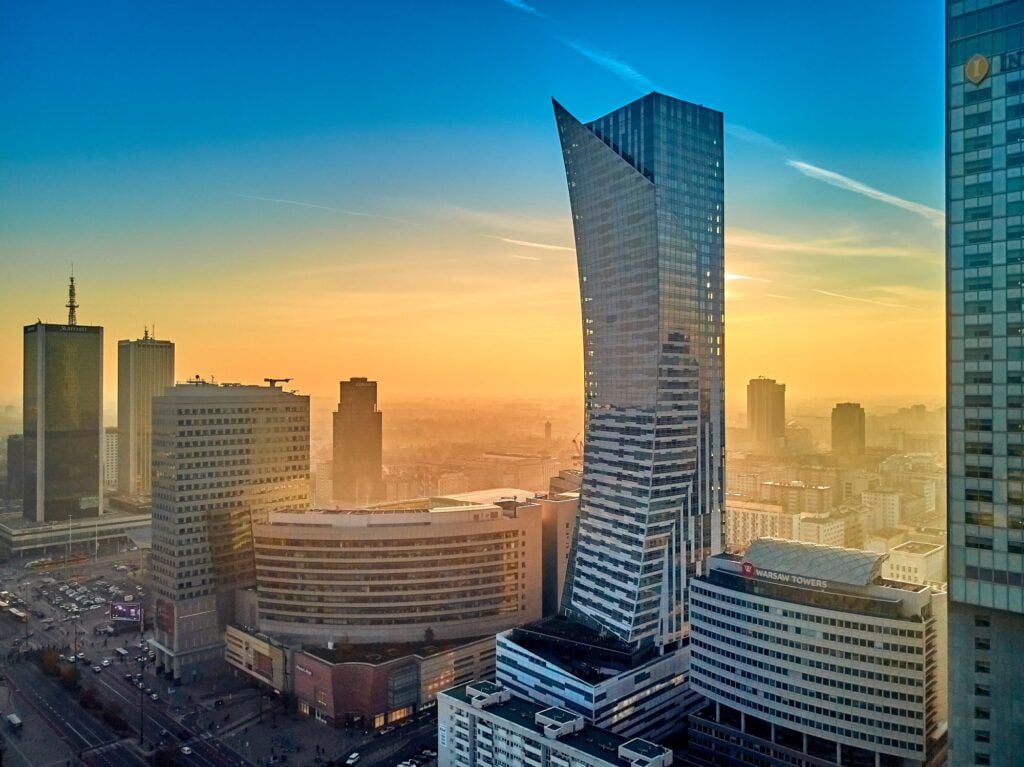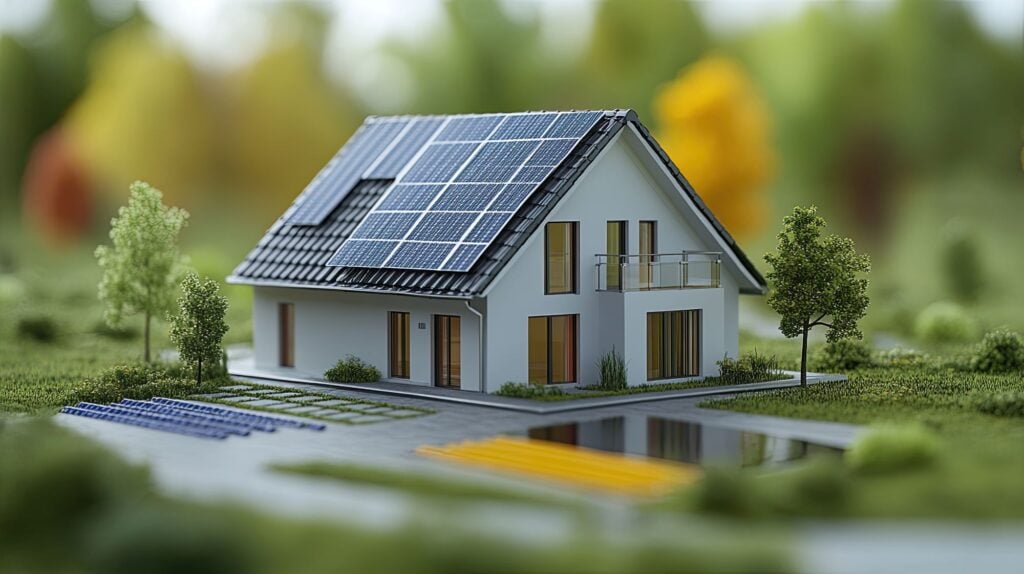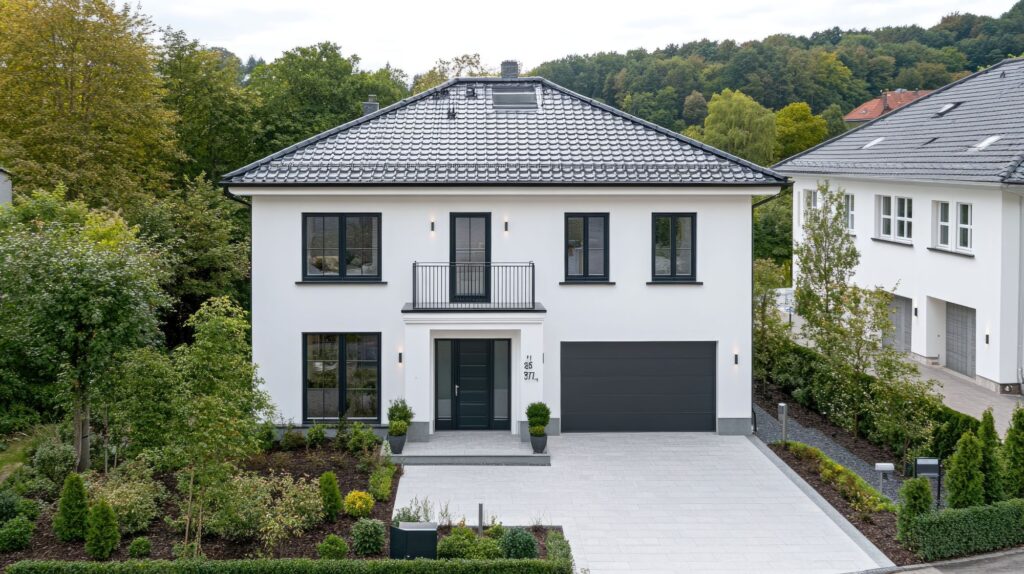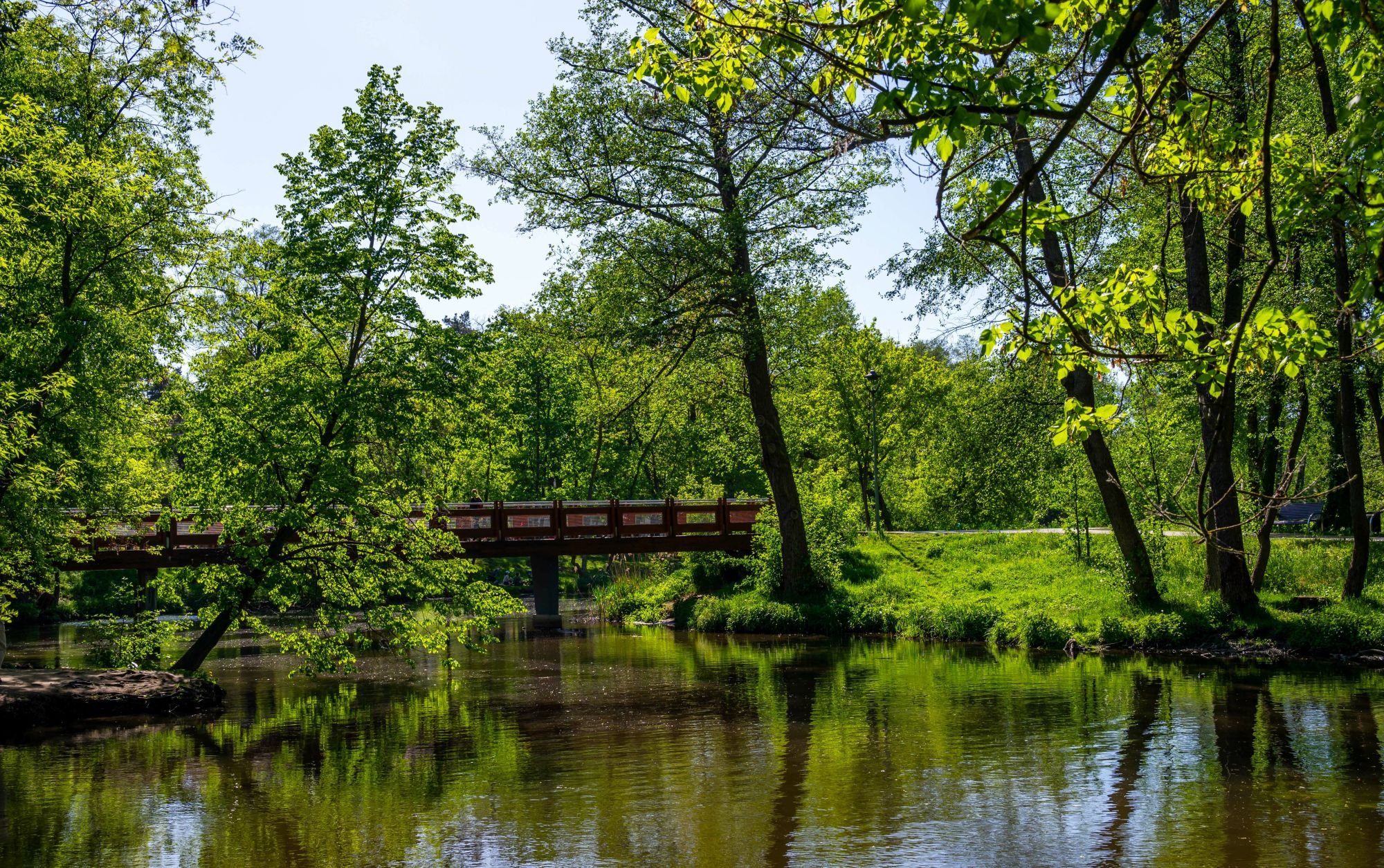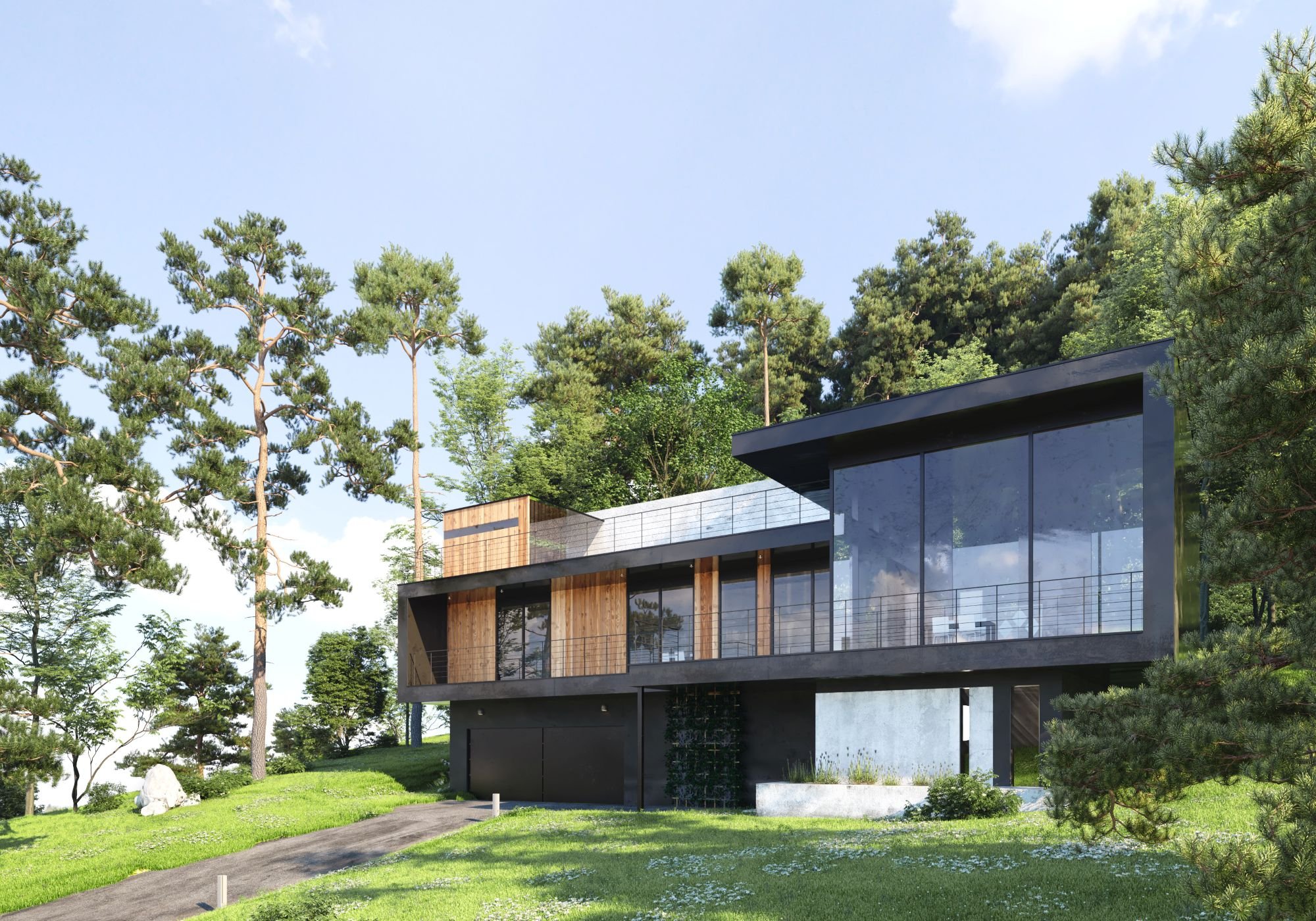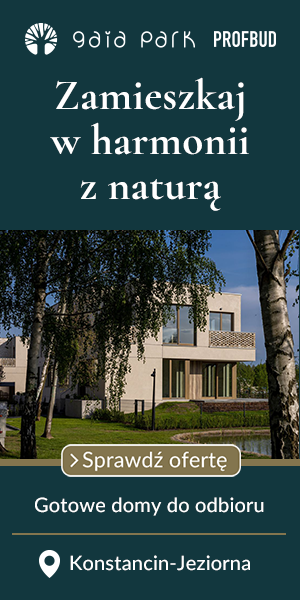Czytaj teraz: [ENG] Investing in Poland: Discover the latest trends in Poland’s luxury real estate market
-
01
[ENG] Investing in Poland: Discover the latest trends in Poland’s luxury real estate market
[ENG] Investing in Poland: Discover the latest trends in Poland’s luxury real estate market
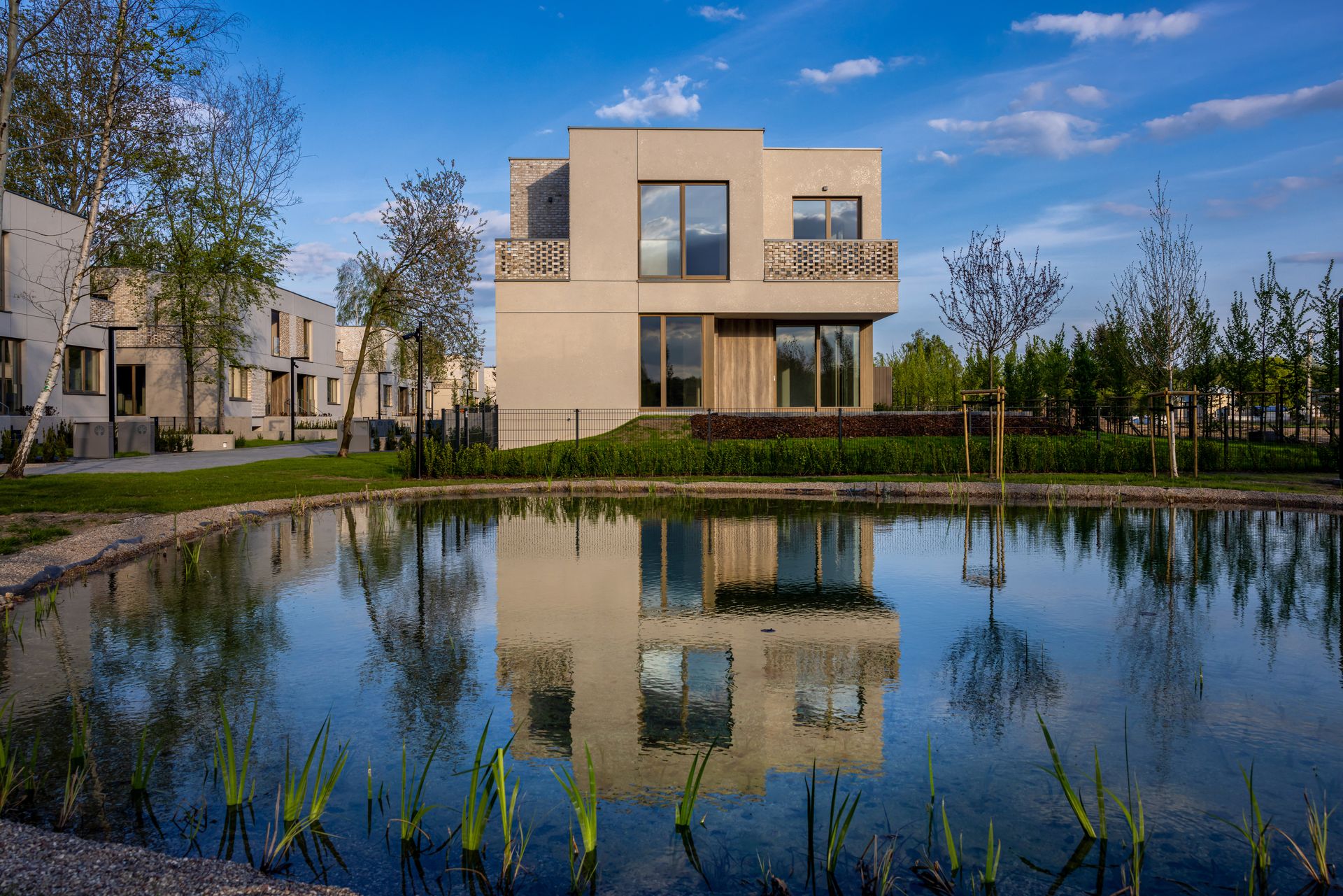
Is the luxury real estate market in Poland just a passing trend or a real investment opportunity? In 2025, more and more signals point to the latter. The premium market in Poland is not only maturing but also gaining new quality — it’s becoming more selective, aware, and focused on long-term value.
According to the latest KPMG report, the value of the luxury goods market in Poland reached PLN 55.6 billion in 2024, a rise of as much as 24.6% compared to the previous year. This growth is no accident — it’s the result of the growing number of affluent Poles, the returning middle class, and the influx of investment capital into the premium segment. Luxury is becoming not just a status symbol, but also a strategic way to allocate capital in times of economic uncertainty.
If you are considering an investment that is not only fashionable but also smart — based on concrete data, trends, and predictable value growth — we’ll show you how Poland’s luxury real estate market is changing in 2025, who is investing, which locations to watch, and how to recognize true luxury amid a jungle of marketing promises.
Luxury real estate market in Poland — what’s changing in 2025?
The premium real estate market in Poland is not just growing — it’s maturing. In 2025, it’s increasingly clear that investing in luxury is no longer reserved only for the few. The definition of value, investor expectations, and — most importantly — the geography of this market are changing.
Warsaw remains the leader, but it’s no longer the only direction worth watching. The Tri-City, Wrocław, Kraków, Poznań, and Łódź are increasingly attracting capital from wealthy, including foreign, investors.

What makes the luxury real estate markets in Poland so appealing?
Locations with rising prestige, rapid infrastructure development, and projects that combine luxury with functionality. Investors are no longer looking just for apartments in the city center — there’s growing interest in:
- boutique estates,
- urban villas,
- low-density but high-standard housing.
In 2025, we see a clear return to investing in value, not just square meters. What does that mean in practice? Buying decisions increasingly focus on the quality of finishes, renowned architectural studios, functional layouts, and access to private spaces — like gardens, terraces, wellness zones. The number of rooms matters less. Everyday comfort and long-term usability matter most.
The market situation in the real estate segment
Macroeconomics also play a big role. High inflation, still unstable interest rates, and rapid urbanization are shifting purchasing preferences. Many investors treat premium real estate as a safe haven for capital — less susceptible to fluctuations than the mass market. Moreover, rising construction and material costs make top-standard properties appreciate even more compared to new but budget projects.
In 2025, ESG (Environmental, Social, Governance) principles also come to the fore. Premium investors today ask not only about the view but also about the building’s energy class, passive technologies, indoor air quality, and environmental certifications. Developers who don’t meet these standards are increasingly left behind. Luxury without ethics and environmental care is no longer seen as luxury.
What does this mean for you as an investor? That today, just paying a high price isn’t enough to get luxury. You need to know what — and where — to invest in to ensure the property not only retains its value but also becomes a real asset in your investment portfolio.
Who is the Polish premium real estate buyer in 2025?
If you think luxury real estate buyers today are only celebrities or finance executives, it’s time to update that image. Data from the latest KPMG report “Luxury Goods Market in Poland 2024” clearly shows that the premium buyer base is becoming increasingly diverse — both in terms of income sources and lifestyle. What’s more, luxury is no longer synonymous with opulence. In 2025, it’s more about thoughtful choices and daily quality.
Who is this buyer?
Often someone between 35 and 55 years old, professionally active, running their own business or holding a top management position. Increasingly, we also see investors from the tech sector, professionals with international experience, and people returning to Poland after years abroad. The key factor? Disposable income ranging from several hundred thousand to several million zlotys a year, plus high financial awareness and a long-term approach to capital allocation.
Redefined luxury: less gold, more meaning
The modern Polish premium property buyer is no longer looking for golden door handles and marble columns. They’re looking for peace, security, excellent acoustics, smart solutions, and finishes that won’t need renovation for the next 15 years. Luxury means control over space — a private garden, an unobstructed view of nature, a fast elevator serving only a few apartments.
There’s also a strong emphasis on safety — both physical (monitoring, access control, safe neighborhoods) and legal (clear property titles, hassle-free land registers, transparent developers).
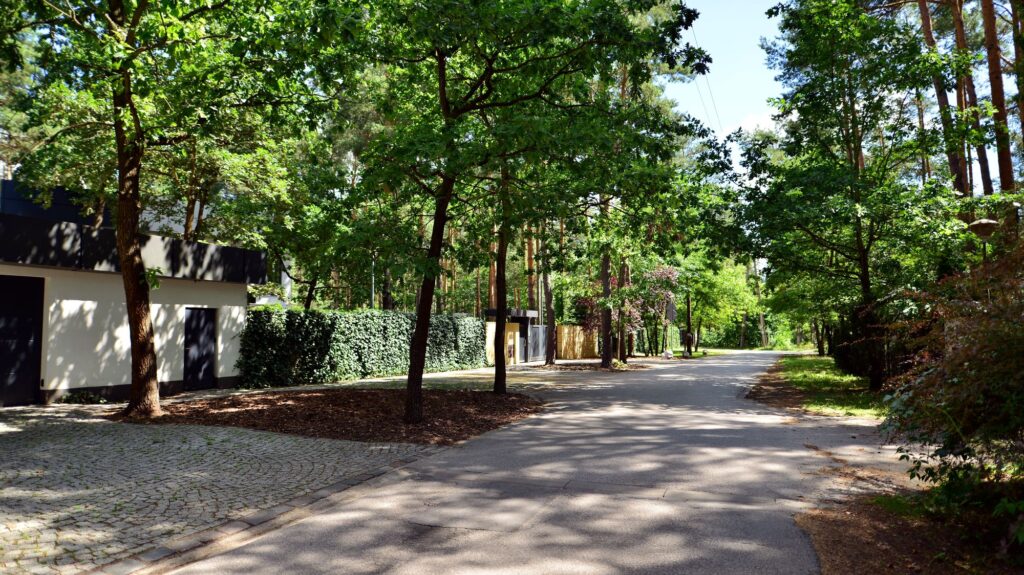
Who really dominates this market?
The KPMG report identifies a strong presence of so-called HNWIs (High-Net-Worth Individuals), people with assets over $1 million. Their number in Poland has been steadily growing — in 2024, it exceeded 90,000, and forecasts for 2025 suggest further growth. HNWIs invest not only in Warsaw — they’re also interested in the Tri-City, Masuria, Podhale, and modern projects in smaller cities.
Alongside HNWIs, the returning Polish diaspora is increasingly important. People who have worked for years in London, Oslo, New York, or Zurich are now looking for properties back home — often not for themselves, but as investment bases or future homes for family. And they have high expectations. Used to global standards, they expect quality and won’t settle for half-measures.
Lifestyle dictates new needs
The lifestyle of many premium property buyers has undergone a revolution. Home office, hybrid work, and flexible hours are now the norm, not the exception. That’s why luxury apartments need not only a living room and bedroom but also a functional office space. Often hidden or integrated into other zones. Add to this the need for so-called multihome ownership — owning two or more properties in different locations for work, relaxation, or weekend getaways.
We also can’t ignore the impact of digital nomads — people working remotely from various places worldwide. Poland, thanks to improving infrastructure and relatively low cost of living compared to Western Europe, is increasingly chosen as a base. For this group, fast internet, coworking access, and high daily comfort are key.
What makes a property luxurious today?
Is luxury still about marble floors and gold-plated faucets? Not necessarily. In 2025, the definition of a luxury property is clearly shifting — from ostentation to quality. More and more investors focus not just on location but on user experience, daily comfort, and the durability of solutions used. If you’re planning to buy a premium property, look beyond catalog visuals.
Materials and finishes: the foundation of luxury
A luxury property is above all about quality — visible and tangible — both in architectural details and interior finishes. In 2025, the standard includes natural wood (often FSC-certified), stone sourced from small manufacturers and hand-formed tile. What matters is not only aesthetics but also durability and wear resistance. A floor that doesn’t creak after a year, walls that don’t develop microcracks after the first winter — that’s true value.
Smart home? No longer an extra, but a necessity
Smart space management is no longer just a trend — it’s the standard in premium investments. A modern luxury property comes with smart home systems. They control lighting, heating, blinds, monitoring, and air conditioning via one app. But that’s not all. Increasingly common are energy management solutions. Photovoltaic integration, heat recovery, heat pumps, air quality sensors, and even zonal noise and lighting control. Technology should support your comfort, not overwhelm you.
Slow living and wellbeing: architecture serving the user
What do luxury villas in Masuria, penthouses in the Tri-City, and modern residences near Wrocław have in common? They’re designed according to the slow living philosophy — mindful, balanced living close to nature. What does that mean in practice? Large glazing, natural light, gardens integrated into the building’s form, space planning to support daily rhythms. From quiet morning coffee on the terrace to evening wellness relaxation.
More and more emphasis is also placed on residents’ wellbeing — both physical and mental. That’s why architectural projects include relaxation zones, quiet areas, and greenery. Intimacy, privacy, no neighbors “behind the wall” — these are features that genuinely affect your well-being and the perceived value of a property.
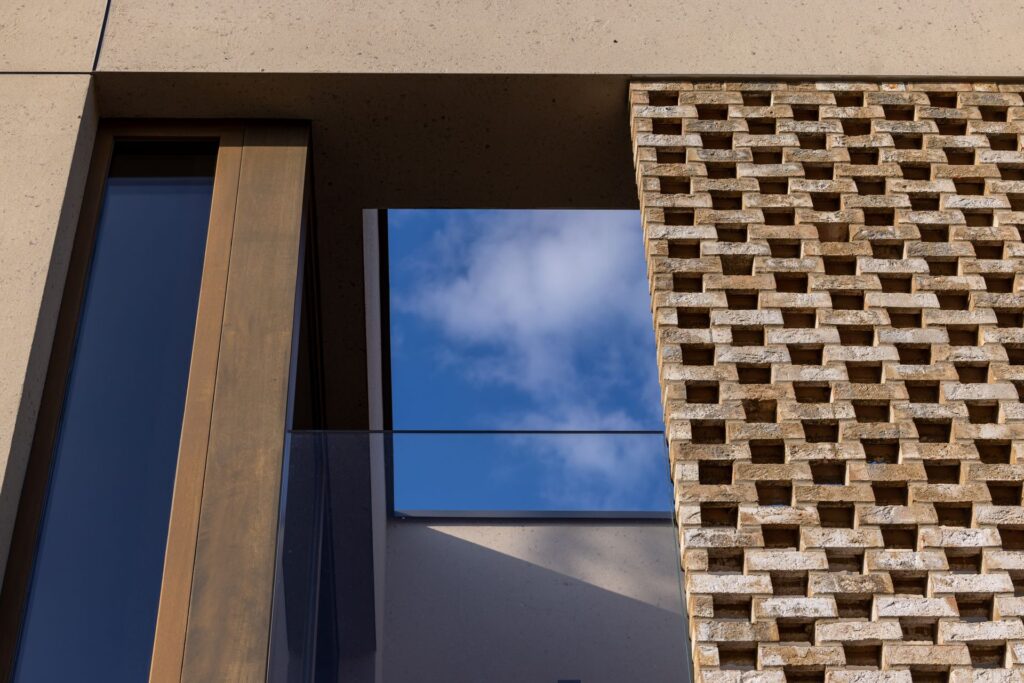
Fewer units, more space
It’s not the number of apartments but their layout, access to light and privacy that determine whether a project deserves the “premium” label today. 2025 projects increasingly offer a limited number of units. Often 4 to 8 apartments in one building — with individual entrances, coded-access elevators, or separate guest zones. In boutique projects, intimacy becomes a new investment value.
What to check when receiving a luxury property?
Don’t be fooled by catalog visuals. Here’s what should be on your checklist when accepting a luxury apartment or house:
- Quality of joinery and architectural details
Are the doors solid, and are the windows energy-efficient and airtight? How are the moldings, thresholds, and handles finished? - HVAC system standard (heating, ventilation, air conditioning)
Check if the system operates quietly, efficiently, and offers zonal control. - Type of facade and thermal insulation technologies
The facade is not just about looks — it also protects against heat loss. Were natural materials used? Are they weather-resistant? - Acoustic solutions and security systems
Silence is luxury. Pay attention to wall thickness, acoustic insulation, as well as alarm and monitoring systems.
In 2025, luxury doesn’t shout — it speaks quietly but clearly: “here you can breathe easy.” Investing in premium real estate isn’t just buying space — it’s investing in a lifestyle meant to serve you for years. And a well-thought-out decision today means peace of mind tomorrow.
The future of luxury interiors — what trends dominate in 2025?
Luxury interiors in Poland in 2025 stop being a theatrical display of prestige and become a subtle declaration of lifestyle. Today’s luxury is harmony, mindfulness, and designing for daily comfort, not show. We’re seeing a clear shift toward “minimalism with soul”. A trend blending Japanese wabi-sabi aesthetics, Scandinavian simplicity, and the organic forms of mid-century modern. The result? Spaces that calm, support life rhythms, and simultaneously impress with craftsmanship.
Luxury doesn’t shout — it serves
In 2025, luxury is defined by functionality, not excess. Instead of marble columns and palace chandeliers, clients choose clean lines, natural textures, hidden storage systems, and modularity. Interior designers increasingly work with investors not only on aesthetics but also on the ergonomics of daily life. From designing the morning zone, through the home office, to evening wellness rituals.
Back to earth — materials that breathe
Naturalness is the new form of luxury. Premium interiors increasingly feature raw-textured stone, wood with visible grain, linen, clay, and wool. These materials not only age beautifully but also positively affect the interior microclimate. More and more, investors pay attention to raw material origins, sustainable sourcing certifications, and local suppliers — combining aesthetics with ethics.
Home, office, studio — hybrid space
Lifestyle has changed irreversibly — the home office is no longer an option, but everyday life. That’s why luxury interiors adapt to new needs, offering flexible, hybrid spaces that seamlessly shift from work to relaxation. Integrated home offices, creative zones, mobile partitions, acoustic systems, and adjustable lighting — all ensure that the home can simultaneously be a haven, command center, and creative space. The multifunctional luxury trend is gaining strength.
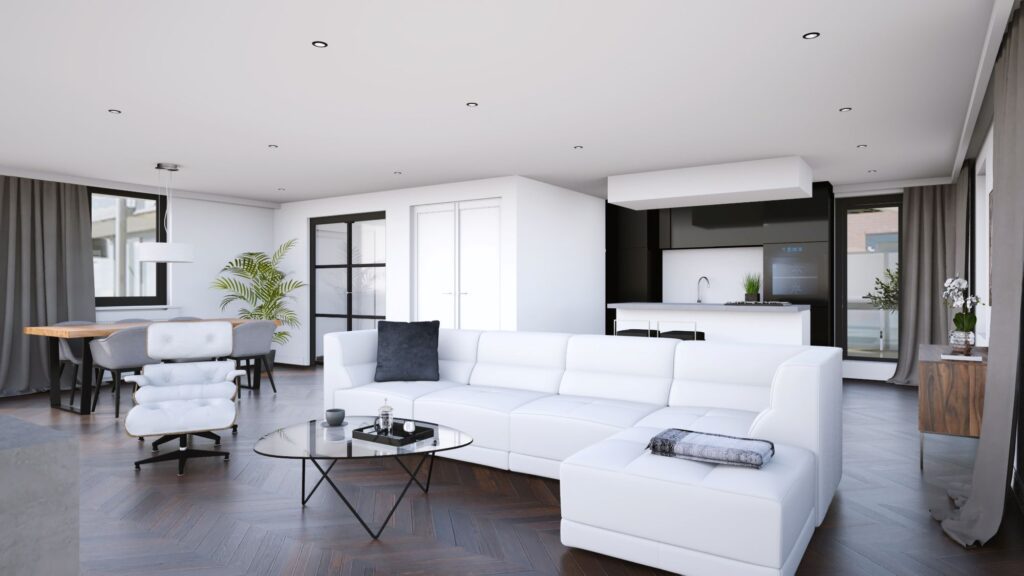
Top 5 interior trends in Poland’s luxury residences (2025)
- Warm, neutral color palettes. Shades of sand, clay, beige, off-white, and ivory replace cold minimalism. Interiors should calm, not overwhelm.
- Integrated libraries and hidden work zones. Discreet offices with closing panels, wall-built libraries, glassed-in niches for videoconferencing — top-standard work comfort.
- Custom-made furniture — Polish artisan brands. A renaissance for workshops and carpenter studios offering personalized designs from natural materials.
- Private SPA and wellness zones. Finnish saunas, hammam-style showers, salt walls, meditation rooms, or chill-out spaces — integrated into the home’s core, not as an add-on.
- Expanded walk-in closets with climate control. In 2025, a walk-in closet is not just storage but a space with air conditioning, air circulation, and daylight-mimicking lighting — ideal for storing premium clothes and daily styling.
Luxury interiors today are an extension of lifestyle, not just a collection of expensive objects. In 2025, what matters most is how you feel in the space — and whether it supports your rituals, needs, and values. The future belongs to personal, warm, and carefully designed interiors.
New opportunities: luxury real estate in investment models
The year 2025 brings a clear revival at the intersection of two worlds — luxury and alternative investing. Premium real estate, until recently associated exclusively with individual purchases for personal use, is increasingly taking the form of investment projects with modern structures. For investors, this means greater flexibility, and for developers — the ability to diversify offerings and increase profitability.
Premium condo hotels — are they making a comeback?
After years of distrust due to unregulated condo hotel models, 2025 sees a return of this investment form, but in a new, more transparent version. Premium condo hotels are emerging in top leisure locations — by the Baltic Sea, in the mountains, and near health resorts. The key change lies in developers’ approach: they focus on high-quality management, fair revenue splits, and full compliance with financial regulations. These projects attract investors with attractive gross returns (estimated at 6–8% per year) with minimal operational involvement.
Luxury gated communities as private fund models
In major urban centers, there’s growing interest in collective investments in luxury gated communities. Wealthy investors are increasingly joining forces to jointly develop and commercialize prestigious residential projects. The structure resembles a private REIT (real estate investment trust) but operates off-exchange. Such models allow full control over the investment, greater management flexibility, and higher margins compared to traditional rentals. In Poland, this trend is just emerging, but pilot projects in the Warsaw, Tri-City, and Kraków areas show significant growth potential.

Premium co-living — sharing costs, not standards
The concept of shared living doesn’t have to mean compromise. The premium co-living version answers the needs of digital nomads, freelancers, and investors seeking a flexible lifestyle. High-standard apartments with private living zones and shared wellness areas, coworking, concierge services, or rooftop gardens. This appeals not only to singles but also to couples or micro-communities. Investors can count on stable, predictable income with lower vacancy risk, thanks to a rotating but loyal tenant profile.
New trend: joint purchase for individual investors
Fractional ownership — owning a share of a luxury property (e.g., 1/8, 1/10, or 1/12) within a precisely regulated structure — is a trend gaining traction in Poland. Popular in Spain, Switzerland, and the U.S., it’s now gaining recognition among Polish HNWIs seeking luxury exposure without committing all their capital. In practice, it means using a villa or apartment for a set number of days per year, with the option to resell the share or rent it out through an operator. A well-designed legal and management framework offers investors real comfort and security.
Is it worth investing in luxury real estate in Poland in 2025?
The premium real estate market in Poland in 2025 is maturing and attracting not only wealthy buyers but increasingly conscious investors seeking long-term capital protection. High inflation, financial market volatility, and declining attractiveness of classic deposits mean luxury properties — especially in carefully selected locations — are now seen as a stable and resilient “safe haven” for capital.
Analysis of profits, risks, and development prospects
The profitability of luxury real estate investments largely depends on three key factors: location, project uniqueness, and management strategy. In the best cases, ROI reaches 5–7% net annually, and with short-term rentals or hybrid management — even more. However, investors should be aware that this market is not without risks. Low liquidity, high entry costs, and potential difficulties in selling narrowly profiled products (e.g., an atypical penthouse) are factors to account for in calculations.
When does a property become a “safe haven” for capital?
Not every luxury property automatically serves as capital protection. A safe haven is an investment that — regardless of the market cycle — retains value, generates demand, and remains attractive over the years. In practice, this requires careful selection: a reputable location, ESG-compliant project, high-quality execution and manageability (e.g., rental options through an operator). Increasingly, the emotional aspect also matters: unique interiors, views, the property’s story — features that not only build value but also protect it over time.
What not to forget: emotions are good for decorating, bad for buying
Luxury tempts with detail, atmosphere, and prestige — and it’s easy to get carried away. That’s why, when buying premium real estate, an investor should follow hard criteria: legal status, project quality, market analysis and potential return on investment. Leave emotions for the decorating stage — that’s when they make the most sense and have the most value. The purchase decision itself should be treated as a business move: cool-headed, professional, and based on expert advice.


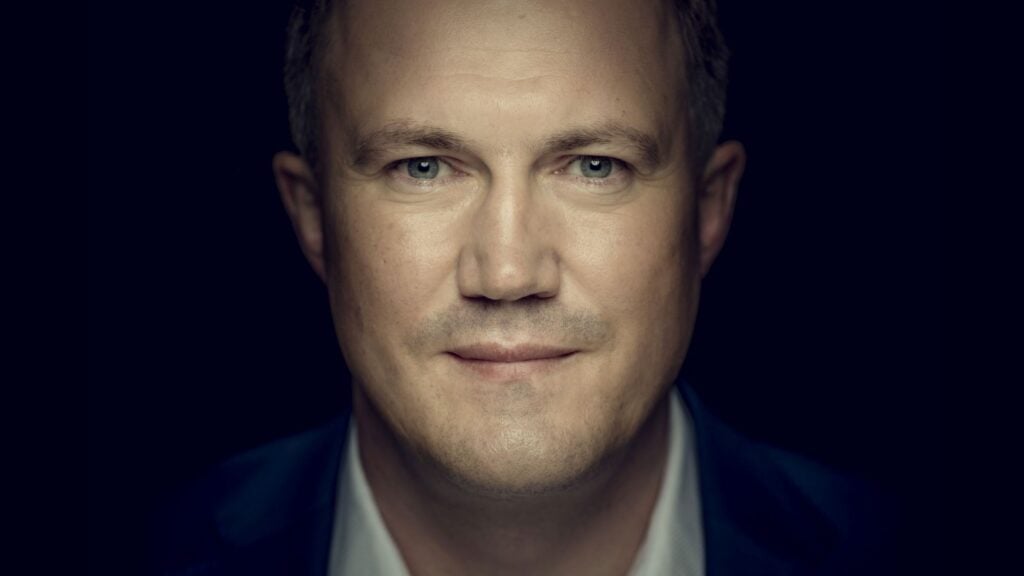
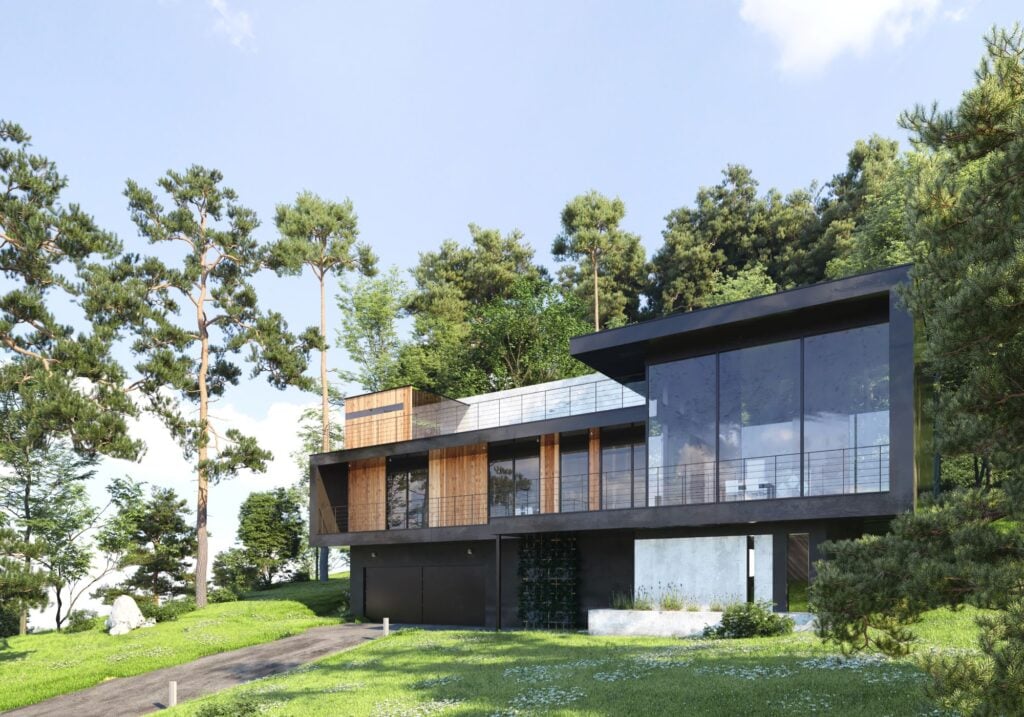
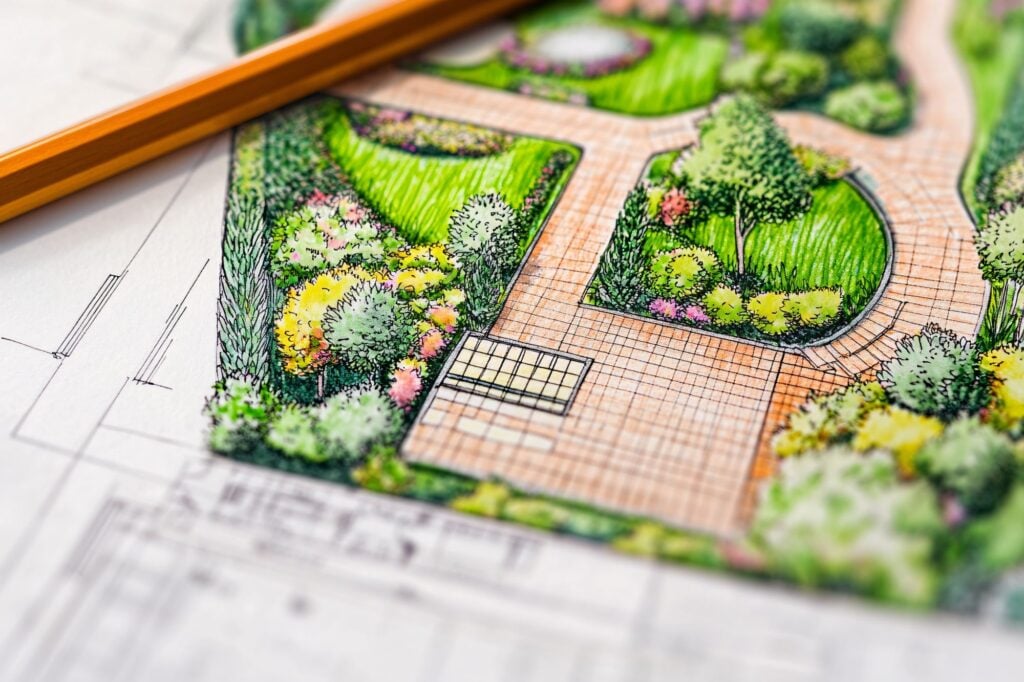
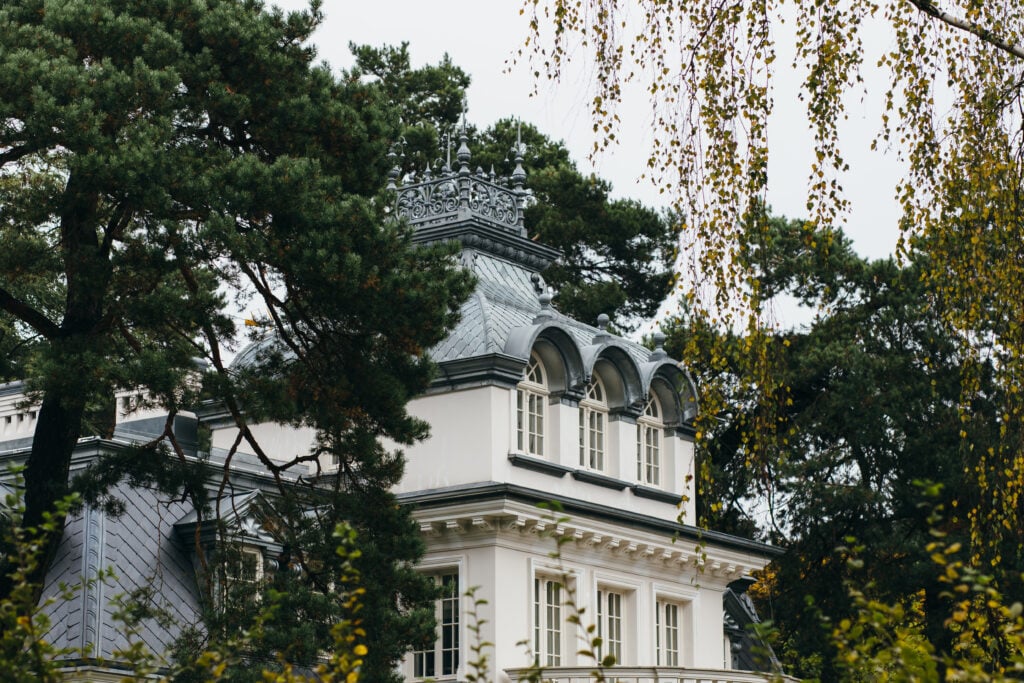
![[ENG] Life in Warsaw. 10 places you must visit in the city](https://livingredefined.pl/wp-content/uploads/2025/05/stare-miasto-warszawa-1024x630.jpg)
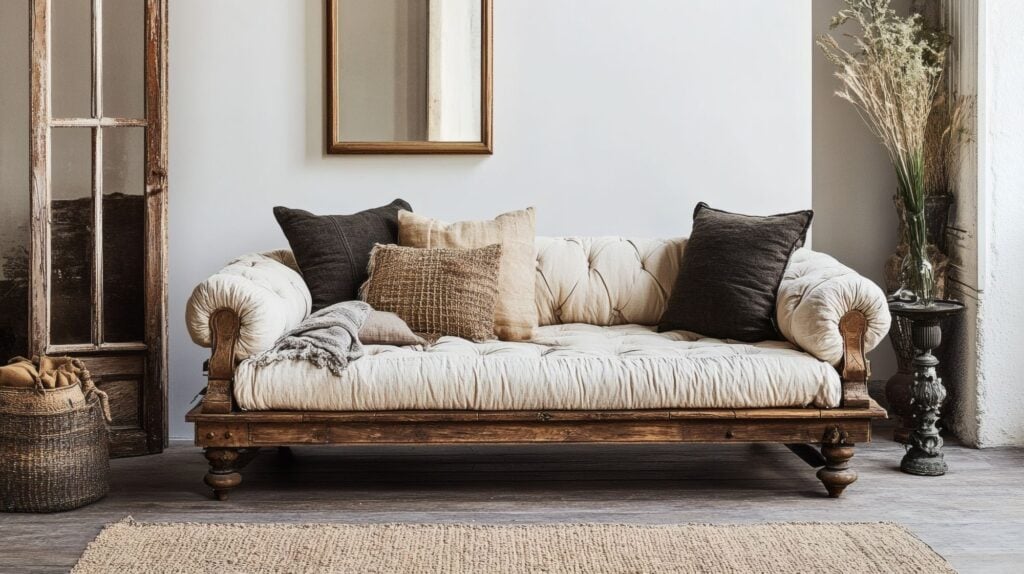
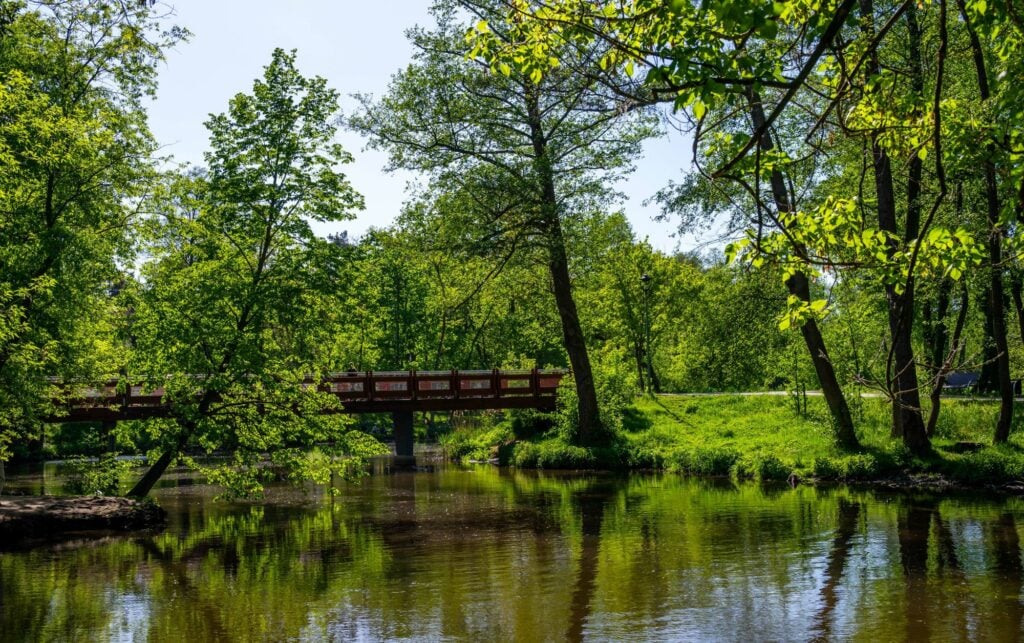
![[ENG] Safe and Sound. Experience the Modern Urban Living in the Capital City of Warsaw](https://livingredefined.pl/wp-content/uploads/2025/04/warsaw-city-panormaic-view-1024x409.jpg)

